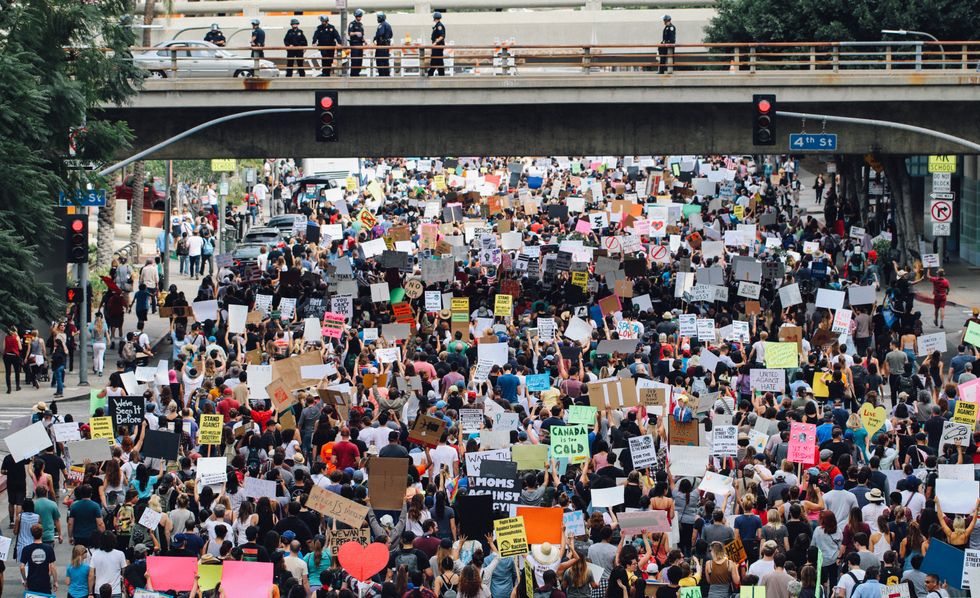Humanity oftentimes mirrors the artlessness of nature. So, let me preface this commentary with a question: when a tree falls down during a storm, how do you address the colossal chaos? It is certainly an eye sore. It appears altered from when it was standing up right, for its bark is fractured and its branches are dismantled. Yet, the tree is still existent; it has not disappeared. In order to truly move the tree, to get rid of it, to dispatch it… one must uproot it. Otherwise, the roots will remain embedded in the soil, visible or not. The uprooting of this tree requires planning, labor, expense, and most likely, some sweat and back pain along the way.
Analogously, when a societal issue evades its position of attention, or falls away from media’s center stage, the issue did not unassumingly evaporate. Like the tree, the societal issue has simply shifted its structure or appearance. It is still present. Its roots stretch out beneath the ground, solidly anchored in the rich dirt, advancing deeper as time passes. In order to truly execute the social issue, uprooting is compulsory, and this uprooting entails unrelenting effort.
In our extremely multifaceted and polarized current state, I challenge you to think of the plethora of complex social issues pertaining to prejudice and discrimination as trees. These issues are not dead simply because the way they present themselves has shifted. Real, authentic “change” is not simply the transition of structures, nor is it a minor shift in behavior. Rather, when it comes to controversial social issues, “change” is the systemic uprooting of institutionalized concepts and social norms.
The tree can dispel the trending viewpoint that racism, sexism, and all the other “isms” have diminished substantially. While these issues have been identified, addressed and discussed, and awareness about them has heightened, they have certainly not been obliterated. In fact, the malicious roots that feed these power-hungry “isms” have only grown deeper and more threatening. From these vibrant roots, tress of hatred have cultivated, whether the tree’s exterior façade is evident or not.
Less than a century ago, an African American would be unable to eat at the same restaurant as I, based off the single fact that her skin did not match my sunburned, freckled and fair skin that I personally despise.
One hundred years ago, I, female, would be ineligible to vote for the President, for my opinion was considered untenable. Just decades ago, a brown skinned face would never reveal itself on an advertising billboard, nor would a woman of color be employed as a top runway model, nor a principle ballerina.
Just two years ago, gay marriage was deemed illegal by federal law, as detestation infiltrated too many American citizens’ intellects.
Compared to the past, prejudice and discrimination based on race, ethnicity, and gender… have been greatly diminished, right? Over the past century, we have made so many positive and enlightening changes, right?
Wrong.
And wrong again.
While the inclination to debate discrimination and the quest for equality have both amplified, sustainable changes are lacking. The trees may have fallen, their leaves may have converted into a diverse color, the branches may have a new composition of moss. Yet, the roots of these issues are alive, growing continuously. These “changes” that are supposed to improve opportunity are not “changes,” at all because in many ways, they have not been sustained.
Downward mobility rates are on the rise. Successes for minority groups do not transgress from generation to generation. One instance of triumph does not transition to triumph for that individual’s child. These rare occasions of “change” are in fact, simply a transitory reformation. These instances are transient and short lived. They are leaves that blow away in the wind, as the roots of systematic issues and “isms” prevail arrogantly underneath the ground.
By claiming that society has wholeheartedly addressed the complexities of discrimination, we are ignoring the grim fact that discrimination, animosity, bias, stereotyping, and violent forms of intolerance have only been organizationally transformed. Their criminal roots are thriving prosperously.
It is our obligation to be socially aware and accountable for these transformations, and to exert the energy, sweat, and back pain that is needed to uproot them. WE set the parameters for the next generation to continue this uprooting, and to continue making authentic changes, rather than solely masking these antiquated matters that have disrupted society and destroyed the lives of far too many innocent human beings.

















